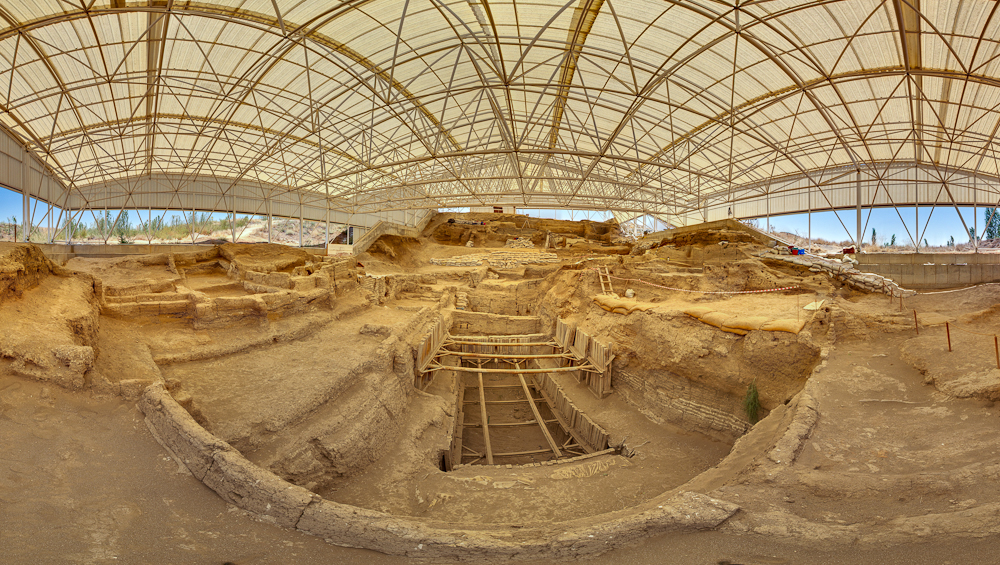“The goal of our research is to understand, among other things, what led to the end of the huge settlement and how its last inhabitants lived.” – Professor Arkadiusz Marciniak, with the Institute of Archaeology of the Adam Mickiewicz University in Poznań, Poland.

PHOTO: scotthaddow.com
ÇATALHÖYÜK, TURKEY – two unique figures were discovered in one of the oldest and most famous ancient urban centers in the world: Çatalhöyük.
Çatalhöyük, a UNESCO World Heritage Site, is located just southeast of Konya, Turkey. It was originally built along the Çarşamba river, which made it a prime spot for early farmers to settle down and eke out a living. The site was first discovered by archaeologist James Mellaart in 1958. It’s estimated to be one of the oldest cities in the world, and flourished 9,000 years ago, right around 7,000 BC. It was inhabited continuously by early agrarian peoples for over one-thousand years, and at its height of power, housed a remarkable 5,000 residents.
The figurines were found buried next to each other inside a tell, or a mound formed over thousands of years as a result of remains, like wall ruins or refuse being piled on top of each other. Tells are a wealth of historical information for archaeologists, and this one was no different.
“Both figurines were discovered next to each other inside a house built at the end of the settlement activity, between 63 and 61 hundred years BC. Initially, we thought that we found another piece of ceramic vessel – then it turned out to be a belly of a figure.” – Professor Arkadiusz Marciniak.
The figurines had been placed on some sort of platform along one of the inner walls of the house ruins in the tell. The archaeologists believe the platform was probably a bench. It’s made of mud bricks covered with plaster.

PHOTO: scienceinpoland.com
Both statues depict female figures. The largest is made out of marble and the smaller one out of limestone.
Anthropomorphic figurines are not an uncommon find at Çatalhöyük. Archaeologists have been finding such figurines since they began excavations at the site. However, these are unique. Most figurines found at Çatalhöyük are quite small, and most are made of clay and have their heads crushed or broken off. These are complete figurines carved from solid stone, and they’re relatively large.
“It is also rare that we discovered these monuments in situ,” the team of archaeologists explained, “which means they were located exactly where the ancient residents left them. Until now, similar figurines were discovered in the garbage layers, not within a particular house. This allows to better understand the intentions of their creators.”
Houses in Çatalhöyük are almost always found exceedingly clean. The residents would throw their trash into piles outside the city, where most archaeological discoveries in Çatalhöyük are made. This is why it’s so unusual to find things right where the residents left them, and why we know so very little about the people who lived here so long ago.
According to the researchers working on the excavation, including Professor Marciniak, the figures are probably somehow related to two graves that were found near the platform bench the figurines were discovered on.
These figurines represent a mother goddess, probably an early representation of Asherah, a Canaanite mother-goddess, often called the “Queen of Heaven”. Archaeologist know very little about the early religious practices of the people of Çatalhöyük. These figurines will help to give them some insight as to what they believe.
As of now, it’s unclear why a mother-goddess would be associated with a grave site. Perhaps she was meant to watch over the dead. It’s too early to tell.
Both figurines have been carefully cataloged and sent to museum storage in the nearby city of Konya, Turkey. The archaeologists are planning on opening, excavating, and cataloging the two graves in 2017. Hopefully then the purposes of the two figurines will become apparent. For now, we can only speculate.

